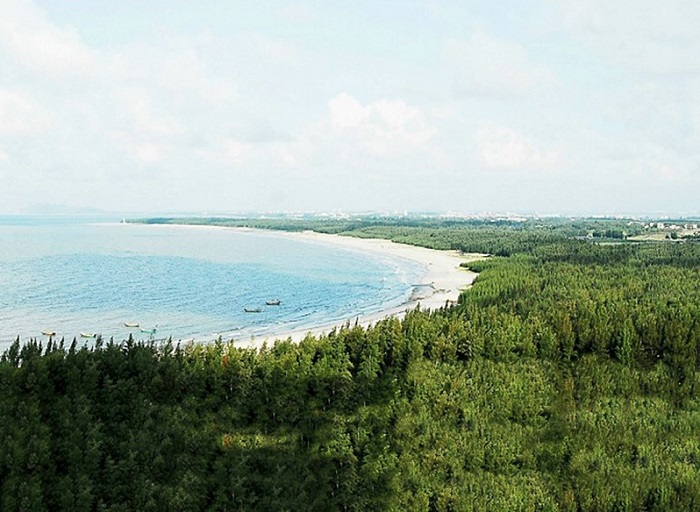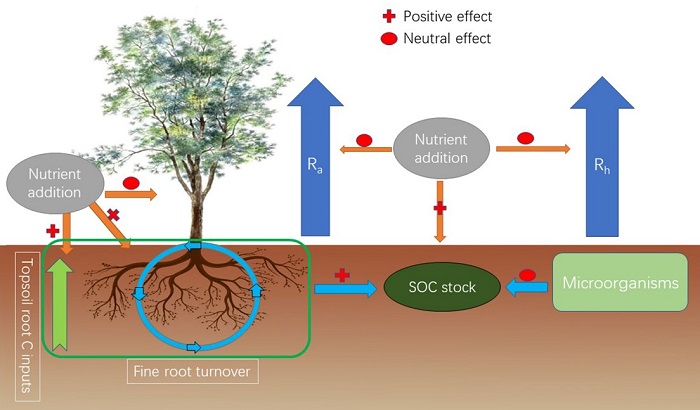South China Botanical Garden Xiaoliang Station Made Important Research Progress in the Research Direction of the Carbon Sequestration Function of Coastal Shelter Forests
Casuarina equisetifolia plantations have been widely established along tropical and subtropical coasts, where they act as a windbreak to shelter coastal areas. C. equisetifolia shelter plantations also fulfill another critical ecosystem service by sequestering large amounts of carbon (C), contributing to climate change mitigation. However, shelter plantations are usually established on barren soils, which may limit tree growth and C sequestration rates. Therefore, systematically understanding the impact of fertilization on ecological functions of these coastal shelterbelts, especially the C sink function, is an essential scientific issue in the current coastal C sink research.
Scientists from South China Botanical Garden, CAS analyzed the three-year experimental data and studied the effects of fertilization on the C sequestration of C. equisetifolia plantation. The annual net primary production (NPP), annual respiration (Rh), and net ecosystem production (NEP) were calculated by measuring plant growth rates and partitioning soil respiration. The basic soil characteristics and plant nutrient concentration were measured at the beginning and end of the experiment.
This study found that the growth of each part of C. equisetifolia was not affected by N and P fertilization, but N addition significantly increased the N concentration in the branches. Soil respiration was also not affected by fertilization treatment. Therefore, fertilization did not significantly affect the C sequestration capacity of these coastal shelter forests, but the addition of nitrogen or phosphorus significantly increased the organic C in the topsoil. Fertilization enhanced fine-root allocation to topsoil and turnover, which increased topsoil C inputs, but without stimulating aboveground biomass growth and C emission (Figure 2). Compared with other ecosystems, the coastal C. equisetifolia plantation had apparent advantages in its C sequestration capacity in the early stage of construction. The results showed that although the fertilization did not increase the C sequestration of the C. equisetifolia plantation, it increased the soil C storage, improving the soil condition of the coastal ecosystem and providing a material basis for the growth of other plants. Overall, the study shows that young C. equisetifolia forests can thrive in barren coastal soils and still have strong C sequestration capacities without the input of external nutrients.
C. equisetifolia is widely distributed in the tropical and subtropical regions and the main species in the coastal shelter forests in South China. They play the role of windbreak and sand fixation and serve as crucial coastal C sinks. Therefore, improving the C sink function of the coastal C. equisetifolia plantation is one of the essential means to solve climate change. At present, the research results are published online in "Land Degradation and Development" under the title "Nutrient addition enhances carbon sequestration in soil but not plant biomass in coastal shelter plantations in South China."
See https://onlinelibrary.wiley.com/doi/abs/10.1002/ldr.4078

Figure 1. Typical C. equisetifolia Coastal Shelter Forest of in Southern China
(Photographed near the Experimental Platform of Coastal Shelter Forest, Xiaoliang Tropical Coastal Ecosystem Research Station).

Figure 2. Schematic diagram of the impact of fertilization on the carbon sink function and carbon cycle process of the C. equisetifolia plantation.
File Download: